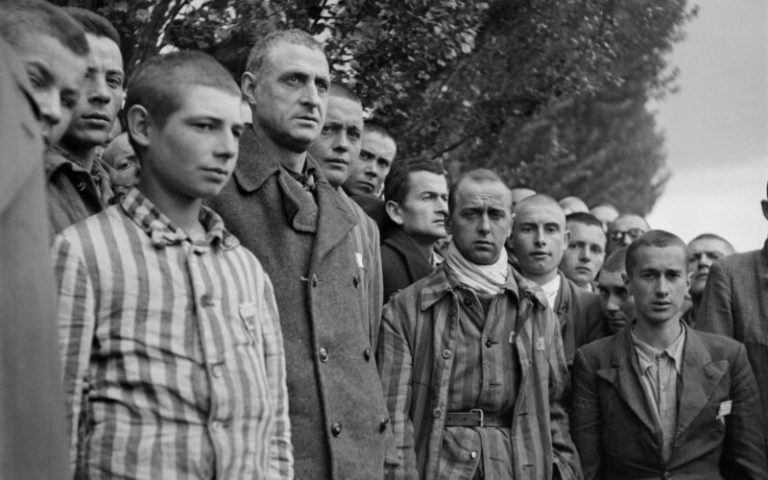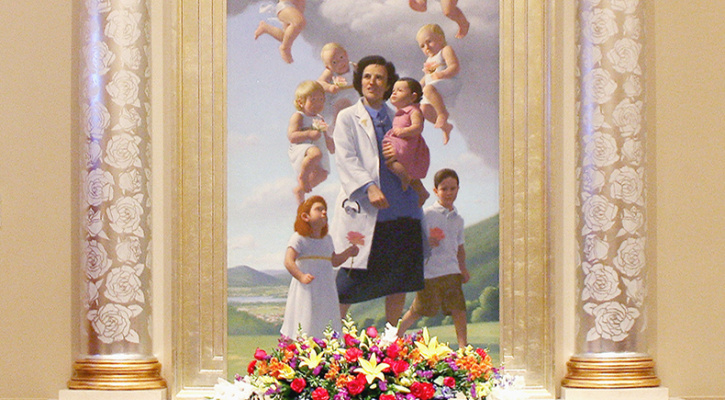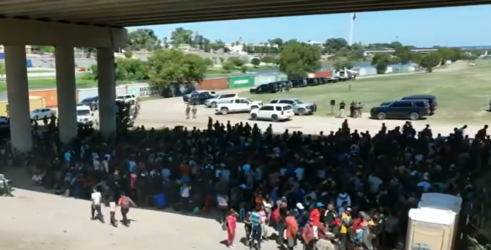The Harrowing Untold Story of the Priests in Dachau

Cardinal Sarah’s Challenge to Traditionalists
July 20, 2017
Fr. Gerald E. Murray: Is Etiquette More Important Than the Good of Souls?
July 20, 2017
French prisoners sing the national anthem, "La Marseillaise", 29 April 1945 upon the liberation of the Nazi concentration camp of Dachau, near Munich, by Allied troops. Himmler announced the creation of Dachau on March 20, 1933. More than 200,000 people were detained between 1933 and 1945, and 31,591 deaths were declared excluding the victims of the evacuation march in April 1945. From December 1944 a typhus epidemic spread in the camp as many convoys arrived from other evacuated camps. The US troops of General Patton entered Dachau on the 29th of April 1945. At the liberation of the camp, the US army imposed a quarantine until May 25 to control the typhus epidemic. About 2.500 people died from 29 May to 16 June 1945 according to a French Memorial Association. (FILM) AFP PHOTO/ERIC SCHWAB (Photo credit should read ERIC SCHWAB/AFP/Getty Images)




